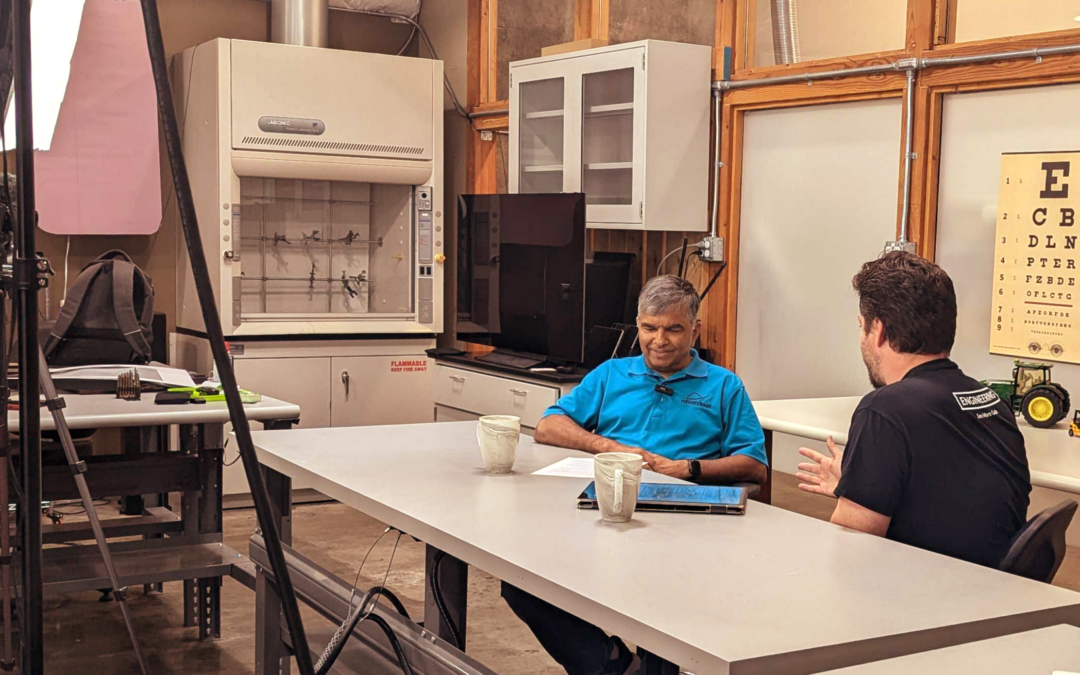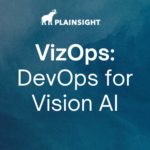Kit Merker (right), CEO of Plainsight Technologies, and Larry Carvalho (left), principal consultant at RobustCloud discuss AI Adoption and Computer Vision.
At Plainsight’s Filter Lab in Woodville, Washington, a recent discussion with Larry Carvalho, principal consultant at RobustCloud, provided valuable insights into the current landscape of artificial intelligence (AI), cloud computing, and computer vision. Larry’s extensive background—from his days at IBM and IDC to his deep focus on cloud, DevOps, and AI—made for an insightful conversation.
AI Adoption Across Enterprises
Artificial intelligence is increasingly becoming integral to enterprise adoption. Major tech companies like Oracle and Amazon have successfully embedded AI into various functions – Amazon enhances its sellers with AI, while Oracle incorporates AI into its Fusion applications. By leveraging AI, companies aim to speed up development cycles and improve efficiency, addressing the common shortage of skilled developers.
Despite significant advancements, certain AI technologies, such as chatbots, remain experimental. As they mature, broader adoption of these technologies is anticipated in the near future.
A key challenge for companies adopting AI and computer vision is aligning these technologies with broader business objectives. The recent shift toward reshoring manufacturing—from regions like China to Mexico and the U.S.—has been a significant driver of AI adoption. This transition requires companies to enhance their data collection and processing methods to train AI models effectively.
With a shortage of AI and computer vision expertise, many enterprises are turning to system integrators, such as Deloitte and Accenture. These experts, along with independent software vendors (ISVs) and hyperscalers like Google and Microsoft, help guide companies through the complexities of AI adoption.
Measuring ROI in AI and Manufacturing
With heavy investment in AI, enterprises naturally focus on understanding the return on investment (ROI). In manufacturing, AI has the potential to enhance efficiency, speed, and quality in operations, reducing reliance on overseas labor while maintaining cost-effectiveness. As more enterprises turn to AI-powered automation, they are banking on the technology to drive substantial ROI by improving manufacturing processes.
Technologies like 3D printing and vision-based systems are critical for scaling manufacturing operations without sacrificing quality or increasing costs. Practical applications of AI are key to maintaining competitiveness while adapting to onshore manufacturing trends.
The Role of Edge Computing
Edge computing is becoming essential in AI adoption, especially in industries with critical latency and real-time data processing. By processing data closer to its source, edge computing reduces the need to send large datasets to the cloud for analysis. This integration with cloud infrastructure allows businesses to continuously refine their operations, improve product quality, and make better predictions about supply and demand. This synergy between cloud and edge computing allows businesses to handle extensive amounts of data, improve efficiency and gain real-time insights— vital components for successful AI deployments.
Lessons from DevOps and Cloud Adoption
AI adoption parallels early DevOps adoption, with similar challenges and opportunities. Both fields face a skills shortage and focus on automation—whether it’s automating software development or operational processes.
Optimizing developer efficiency is crucial for enterprises. Larry emphasized that by freeing up developers from repetitive tasks, companies can maximize their investment in human capital, accelerating the development of innovative solutions that drive value. In the long run, this focus on automation and optimization will be a key differentiator for enterprises that succeed in the AI space.
Privacy Concerns in AI
Privacy is a major concern in AI adoption, particularly regarding large datasets being used to train models. Many enterprises hesitate to use public AI tools, such as OpenAI, due to uncertainty about data sources and potential privacy risks. As Larry pointed out, legal and financial risks loom large, with cases like Air Canada’s chatbot mishaps or the New York Times’ lawsuit against OpenAI showcasing the high stakes involved.
To mitigate these risks, enterprises are increasingly looking to build their own AI capabilities, developing proprietary data streams and models. This approach allows companies to maintain greater control over data privacy and avoid the pitfalls associated with public AI platforms.
The Future of AI and Innovation
While AI is still emerging, the industry is on the cusp of realizing actionable use cases that provide genuine value. Enterprises, especially technology companies, will be instrumental in driving AI’s adoption by demonstrating how the technology can save costs and improve efficiency.
However, one of the unsung challenges facing AI is power consumption. As AI models become more complex, companies will need to address both the silicon and power consumption issues associated with running these systems. In this regard, AI adoption will also be driven by advances in hardware, particularly in terms of reducing power requirements.
Larry’s advice for enterprises was simple: focus on innovation but balance it with the risks involved. AI is a powerful tool for improving efficiencies and staying competitive, but companies must be mindful of emerging regulations and the legal landscape. By taking “big baby steps” toward innovation and automation, enterprises can stay ahead of the curve while managing risk effectively.
At the end of the day, AI represents a significant opportunity for enterprises, but success will depend on providing clear, value-driven solutions that stand the test of time—much like the breakthroughs we saw during the cloud and DevOps revolutions.
—
As we wrapped up the conversation, it was clear that the future of computer vision and AI holds incredible potential. While challenges remain, industries like manufacturing, agriculture, and mining stand to benefit greatly. And with that vision, the future of AI looks bright.
Check out the full interview on our YouTube and stay tuned for more insights from Plainsight’s Filter Lab!




